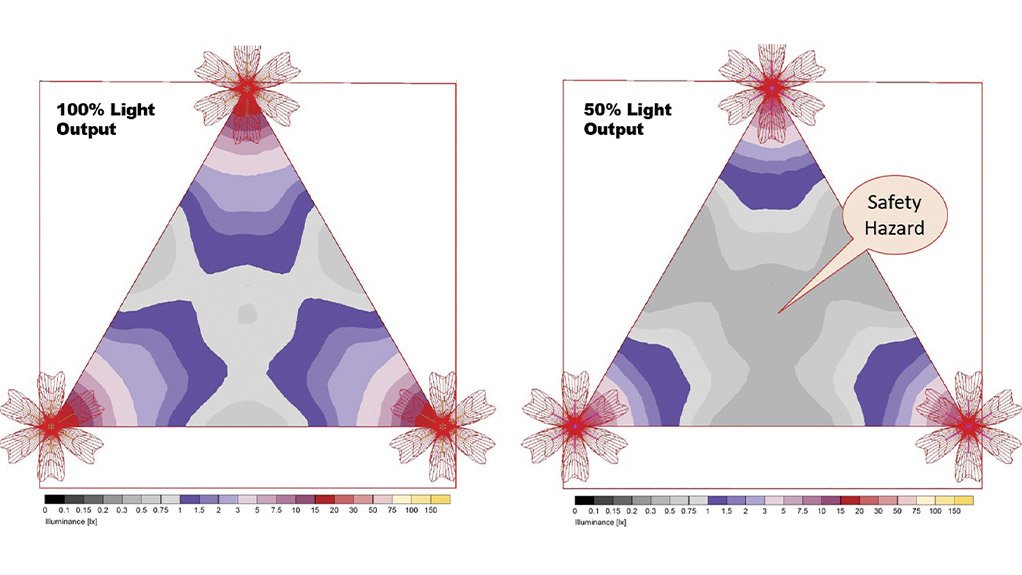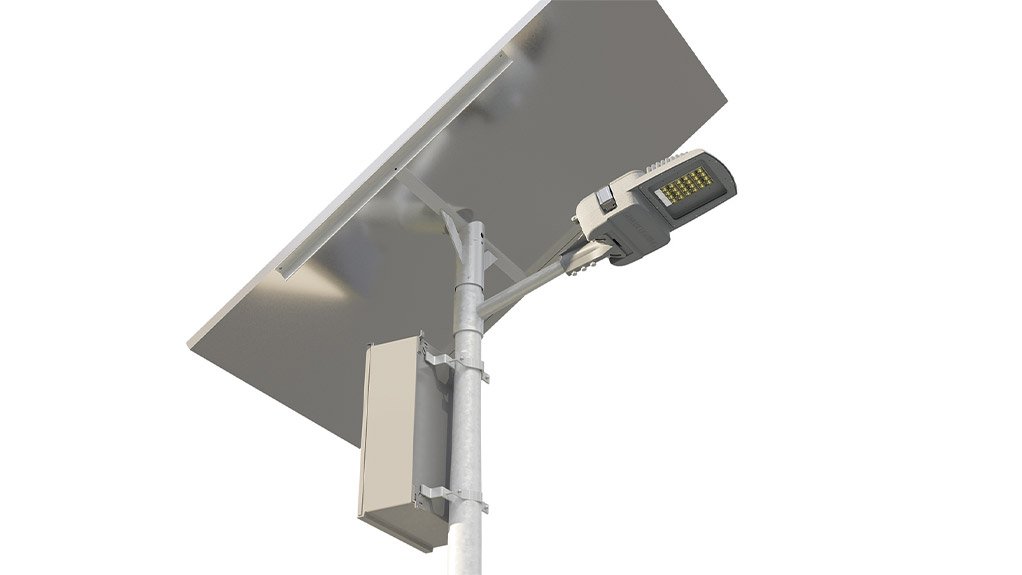Examining the hype around solar highmast solutions: Are they a real solution or just political grandstanding?
Loadshedding has residences, businesses and even municipalities scouring to find affordable solutions that can provide relief from the dark of night. With the focus on municipalities, this means solar solutions for public street lighting, public space lighting and area lighting. For the last decade, due to technological advances in the field of energy storage and generation, solar street lights have been making headway into the public eye with great success. Area lighting using solar high mast solutions have seen little to no adoption in the same period. Could there be a good reason for this?
During the design phase it is important to consider the weight of the solar panels, batteries, and extra bracketry, as well as the efficiency of the solar panels. Even more importantly, is the capacity of the existing high masts sufficient?
Public lighting design in South Africa is meant to be governed by the lighting standard SANS 10389-1, which specifies the minimum average maintained illuminance for different types of areas. By reducing the total high mast floodlight power to 40%, from 1 500 W to 600 W, the solar panels can be smaller and the batteries lighter. This increases the
feasibility of a mechanically sound high mast. To ensure that the batteries are small enough to be charged and will not overburden the mast, the 600 W light emitting diode (LED) floodlight power is further reduced to
300 W during the night cycle by employing light dimming profiles. The cost of this design choice is that not nearly enough light reaches the ground by abandoning the specifications as prescribed in the SANS standard.
The spacing and luminance require-ments are designed to ensure a good level of uniformity between masts. Having light only illuminating the base of the mast serves no practical purpose.
Is some light better than no light? If the answer was yes, lighting standards would have been universally abandoned long ago. A crucial part of lighting projects is the accompanying simulations. Low specification projects will expect an average of 1 lux and a minimum of 0.5 lux. Careful attention should be paid to ensure 1 lux is not measured at the base of the mast only, and a disappointing 0.1 lux between masts (Fig 1).
Solar high mast lighting solutions are attractive options for the upliftment of informal settlements and town-ships which house South Africa’s poorest communities. These communities are estimated to be 90% black South Africans. Should the deployment of solar power high masts with poor lighting performance be realised, it would mean the marginalised, poor black communities in South Africa are again being neglected and denied basic human rights to a safe and secure environment.
The wide adoption of 6 m to 8 m solar street lights has seen great success in secure areas where the risk of vandalism
and theft is low. These street lights are designed to provide sufficient illumination according to the SANS specifications
while using smaller solar panels and batteries, making them a more sensible option (Fig 2).
We are guaranteed continuous advances in technology which will soon allow for SANS-compliant solar high masts to exist. Unfortunately, low powered LED floodlights have no practical use being mounted on high masts.
Genlux Lighting, a division of ACTOM, is a leading lighting manufacturer in South Africa, and would love to engage with any individual or organisation who would like to receive more information.
Comments
Press Office
Announcements
What's On
Subscribe to improve your user experience...
Option 1 (equivalent of R125 a month):
Receive a weekly copy of Creamer Media's Engineering News & Mining Weekly magazine
(print copy for those in South Africa and e-magazine for those outside of South Africa)
Receive daily email newsletters
Access to full search results
Access archive of magazine back copies
Access to Projects in Progress
Access to ONE Research Report of your choice in PDF format
Option 2 (equivalent of R375 a month):
All benefits from Option 1
PLUS
Access to Creamer Media's Research Channel Africa for ALL Research Reports, in PDF format, on various industrial and mining sectors
including Electricity; Water; Energy Transition; Hydrogen; Roads, Rail and Ports; Coal; Gold; Platinum; Battery Metals; etc.
Already a subscriber?
Forgotten your password?
Receive weekly copy of Creamer Media's Engineering News & Mining Weekly magazine (print copy for those in South Africa and e-magazine for those outside of South Africa)
➕
Recieve daily email newsletters
➕
Access to full search results
➕
Access archive of magazine back copies
➕
Access to Projects in Progress
➕
Access to ONE Research Report of your choice in PDF format
RESEARCH CHANNEL AFRICA
R4500 (equivalent of R375 a month)
SUBSCRIBEAll benefits from Option 1
➕
Access to Creamer Media's Research Channel Africa for ALL Research Reports on various industrial and mining sectors, in PDF format, including on:
Electricity
➕
Water
➕
Energy Transition
➕
Hydrogen
➕
Roads, Rail and Ports
➕
Coal
➕
Gold
➕
Platinum
➕
Battery Metals
➕
etc.
Receive all benefits from Option 1 or Option 2 delivered to numerous people at your company
➕
Multiple User names and Passwords for simultaneous log-ins
➕
Intranet integration access to all in your organisation





















